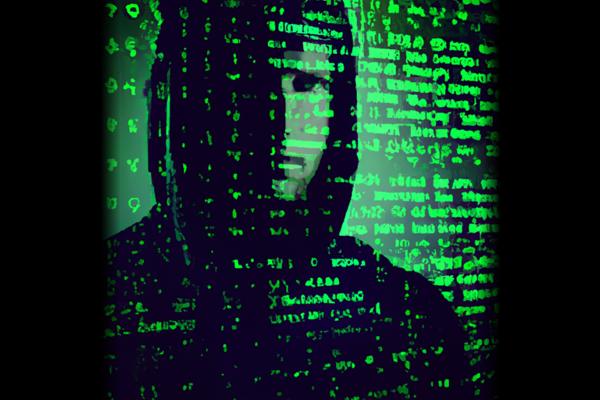Introduction
The LockBit ransomware group [1] [3] [8] [9], once believed to be dismantled [8], has re-emerged with the launch of its LockBit 4.0 program, signaling a renewed effort to dominate the ransomware-as-a-service (RaaS) market [2]. This development highlights the group’s resilience and adaptability in the face of law enforcement challenges.
Description
The LockBit ransomware group [1] [3] [8] [9], previously thought to be dismantled following significant disruptions from law enforcement during Operation Cronos, has resurfaced with the launch of its highly anticipated LockBit 4.0 program, set to debut on February 3, 2025. This resurgence marks a renewed effort to dominate the ransomware-as-a-service (RaaS) market, showcasing advanced capabilities designed to complicate recovery efforts for victims. The new version features a more sophisticated encryption process, appending the extension “xa1Xx3AXs” to each encrypted file name and generating a ransom note titled “xa1Xx3AXs.README.txt” that includes streamlined payment instructions [5].
The group’s alleged developer [9], Rostislav Panev [9], an Israeli citizen [9], is currently facing extradition to the United States after his arrest in August. He is accused of receiving over $230,000 in Bitcoin for his work with LockBit from 2019 to 2024 [9], including a monthly salary of $10,000 for software development [9]. This announcement comes nearly a year after a major setback during Operation Cronos, executed by the National Crime Agency in February 2024 [3], which resulted in the recovery of over 7,000 decryption keys and a substantial decrease in the group’s victim output. Despite these challenges, LockBit has remained a formidable threat, responsible for 37% of all ransomware attacks in May 2024 [8].
LockBit 4.0 signifies a resurgence in large-scale ransomware operations [5], with enhanced targeting of organizations globally [7]. Although specific features of LockBit 4.0 remain undisclosed [2], experts anticipate the implementation of more sophisticated tactics to avoid detection, reflecting the increasing sophistication of RaaS operations [2]. The ransomware is designed for improved data exfiltration [5], operates across multiple operating systems [5], and employs randomized file naming to obscure encrypted data [5]. Additionally, it includes a self-deletion mechanism to erase its own files after encryption [5], further hindering recovery attempts [5]. The group employs double-extortion tactics [8], threatening to leak sensitive data unless a ransom is paid [8].
In a recent statement, LockBitSupp [1] [2] [3] [4] [5] [6] [7] [8] [9], the persona associated with the group, shared a protected zip file directed at FBI Director Christopher Wray, indicating a shift in focus from mere financial gain to challenging law enforcement and maximizing the number of victims on its dark web service [6]. The announcement invites potential affiliates to join [3], requiring a cryptocurrency fee of approximately $780 for instant membership [5], and promises access to luxury items [3], alongside the launch of the first affiliate enrollment links for the new RaaS program. LockBitSupp also promoted a dedicated website, lockbit4.com [1], and five TOR sites [1], although it remains unclear whether LockBit 4.0 will feature a new leak site or modifications to its ransomware [3], given that the previous site was compromised by law enforcement [3].
Security researchers [4], including Vx-Underground [4], have reported gaining access to code samples for analysis and reverse-engineering [4], further emphasizing the imminent threat posed by this new version. Zscaler ThreatLabz has included the LockBit 4.0 ransom note in its repository [1] [4], underscoring the ongoing risk to organizations globally. Experts urge organizations to adopt robust cybersecurity measures [4], stay informed about threat intelligence [4], and regularly update their systems to mitigate the risk of ransomware attacks [4]. The resurgence of LockBit with LockBit 4.0 highlights the group’s history of innovation and adaptability in the face of law enforcement challenges, reflecting its motivation to re-establish its presence after recent setbacks and restore its credibility among cybercriminals.
Conclusion
The re-emergence of LockBit with its 4.0 version underscores the persistent threat posed by sophisticated ransomware groups. Organizations must remain vigilant, adopting comprehensive cybersecurity strategies to protect against such evolving threats. The ongoing battle between cybercriminals and law enforcement will likely continue to shape the landscape of cybersecurity, necessitating constant adaptation and innovation in defense mechanisms.
References
[1] https://www.infosecurity-magazine.com/news/lockbit-admins-tease-a-new/
[2] https://www.vpnranks.com/uk/news/lockbit-4-0-ransomware-kingpins-plot-february-comeback/
[3] https://www.computerweekly.com/news/366617379/LockBit-ransomware-gang-teases-February-2025-return
[4] https://undercodenews.com/lockbit-40-a-resurgence-of-the-notorious-ransomware-group/
[5] https://cyberpress.org/lockbit-4-0/
[6] https://www.redhotcyber.com/en/post/fbi-responds-to-threats-and-announcement-of-lockbit-4-0/
[7] https://www.the420.in/lockbit-4-0-ransomware-titan-returns-to-reignite-the-cyber-war/
[8] https://www.newsminimalist.com/articles/lockbit-ransomware-gang-announces-new-attack-planned-for-february-2025-2a0c5928
[9] https://www.wired.com/story/faa-mystery-drone-ban/





